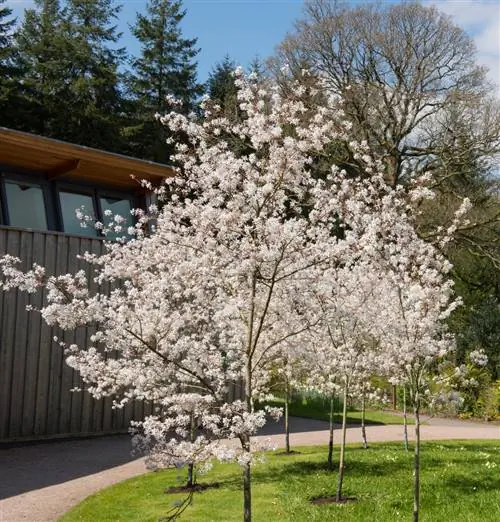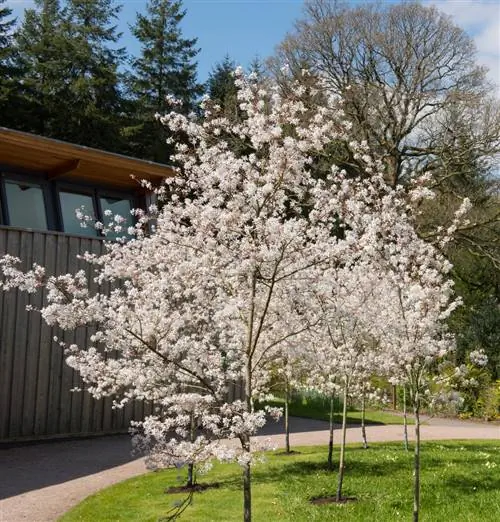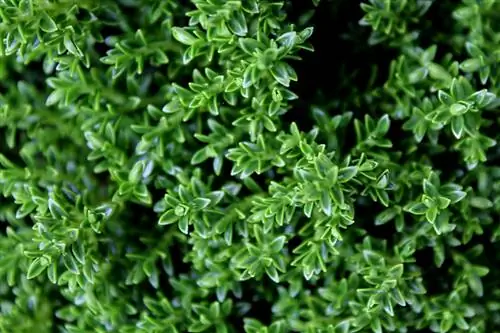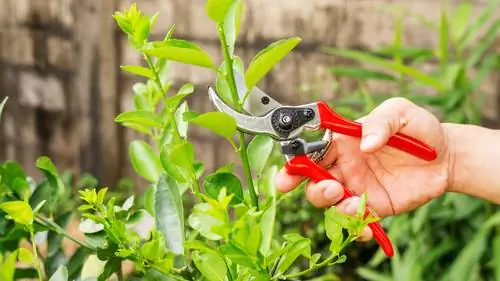- Author admin [email protected].
- Public 2023-12-16 16:46.
- Last modified 2025-01-23 11:21.
Some varieties of serviceberry tend to form an umbrella-like crown with age, with several stems next to each other. By carefully selecting varieties or certain cutting measures, column-like shapes in the style of an obelisk can also be created.

How do I cut a rock pear obelisk correctly?
In order to properly cut a serviceberry obelisk, the topiary should be done in spring. Only make subtle cuts on columnar rock pears, as errors slowly grow out. For other varieties, cut back and shape annually from planting.
Cultivate a rock pear obelisk without much care
The easiest way to grow a serviceberry in the shape of an obelisk is to plant the appropriately named cultivar. Due to its genetic characteristics, the columnar rock pear (Amelanchier alnifolia Obelisk) naturally tends to grow columnar and rather compact. This tightly upright growing shrub grows to around 3 to 5 m high and, in contrast to other rock pears, retains its slender shape even without major topiary cuts. If it does become necessary to use scissors on the columnar rock pear, then the subtle topiary cut should be carried out in spring if possible. Do this very discreetly, as cutting errors only grow out very slowly.
Train other varieties of rock pear to become an obelisk
While the columnar shape of the rock pear requires little human intervention, other types of rock pear need to be shaped as part of the care. However, this only works if the planning for certain topiary cuts begins at a very early age of the plant. Adult specimens of the copper rock pear and other rock pear varieties tolerate radical cuts very poorly. So if topiary is not about the popular branching, but rather a continuous obelisk shape, the plant must be cut back and shaped annually from the moment it is planted.
Shaping multi-stemmed rock pears
One problem when growing a rock pear in the shape of an obelisk is the fact that rock pears often grow several stems next to each other. But you don't have to grab a saw right away. Simply tie the individual logs together compactly to achieve a slimmer column shape. Ideally, you should use special ribbons made from natural materials such as raffia or sisal. These offer the following advantages:
- they are ecologically degradable
- they do not scrub the bark of the rock pear
- they fit harmoniously into the natural garden look
- they can be readjusted if necessary
Tip
There are also obelisk-shaped trellises for garden design. However, you should not put this on a rock pear, as this does not promise an aesthetic result. These obelisks made of coated metal rods are more suitable for climbing roses and other climbing plants.






